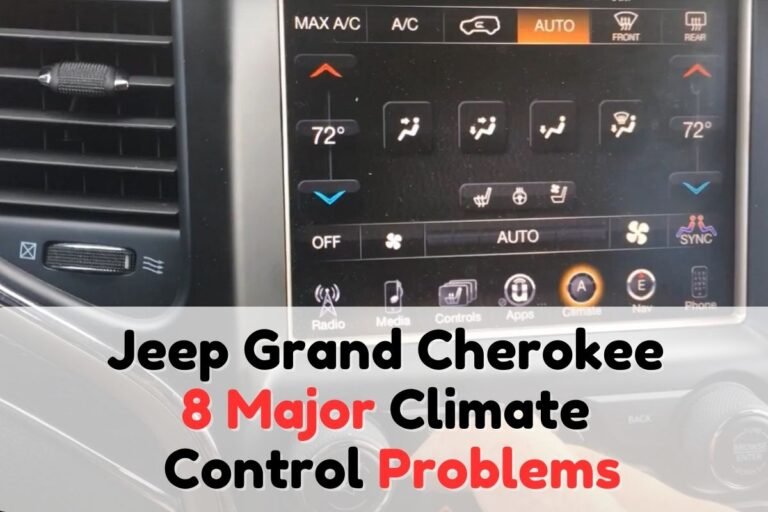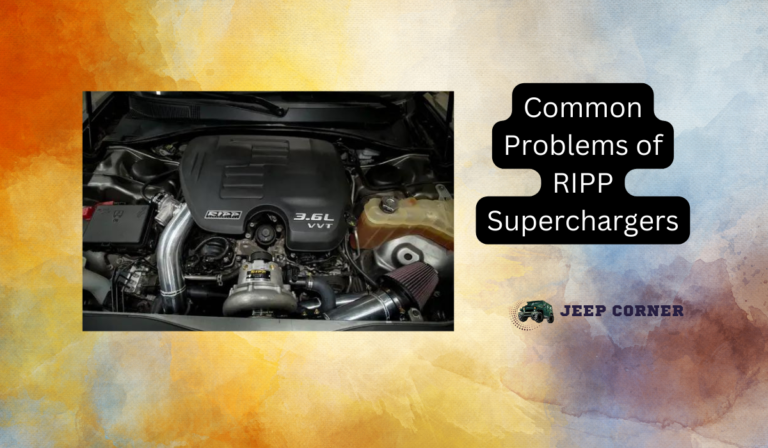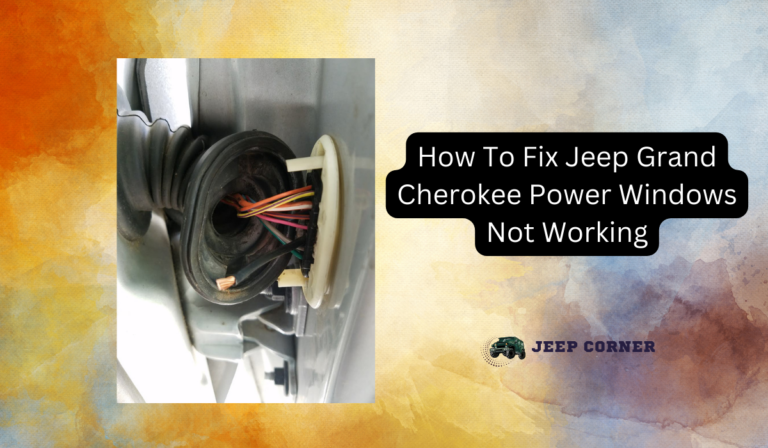What Causes My Jeep Shut Off While Driving And Won’t Start?
Jeep owners have been all over the place physically and extendedly, and it has a legitimate share of problems. A dangerous situation may arise if it shuts, on the way to go somewhere.
Most of the Jeep owners at some stage face jeep shut off while driving and won’t start. Undoubtedly, a serious issue is involved to shut it down like a bad mass air flow sensor, a bad crankshaft position sensor, and a faulty fuel pump.
As a responsible Jeep owner, you should have basic knowledge about your road partner. Check out our article to find out why Jeeps shut off while driving and won’t start and some simple way to fix them.
Table of Contents
What causes my Jeep shut off while driving and won’t start?
Jeep owners commonly encounter bad crankshaft position sensors and faulty fuel systems—some of the regular reasons why a jeep dies randomly while driving is discussed here.
- Bad mass air flow sensor
- Bad Ignition Coil
- Alternator Problems
- Malfunctioning Oxygen Sensors
- Wiring Issues
- Bad Temperature Sensor
- Issues with the Fuel Pump
- A bad crankshaft position sensor
- Faulty Jeep Battery
Bad mass air flow sensor
One of the main speculates for your jeep shut off while driving is bad MAF. Mass airflow sensors (MAF) measure the amount of oxygen entering the engine to balance the air and oxygen ratio and pass it to the engine control module (ECU).
A bad MAF causes numerous problems, such as erratic jerking, engine stalling, and engine stalling.
Signs of bad MAF
The most common early signs of lousy MAF can be
- Hard engine
- Rich or lean air-fuel ratio
- OBD II trouble code
- Hiccups in the engine
- The engine hesitates or turns over
How to fix bad mass air flow sensor;
Simplest and the best solution is to clean it regularly. It is located between the throttle body and the air filter.
To clean, first, remove the airflow sensor using a flathead screwdriver. Clean the sensor with a mass airflow cleaner or rubbing alcohol. Keep at least 30 minutes to dry and reinstall it. If you find it damaged, change it as soon as possible.
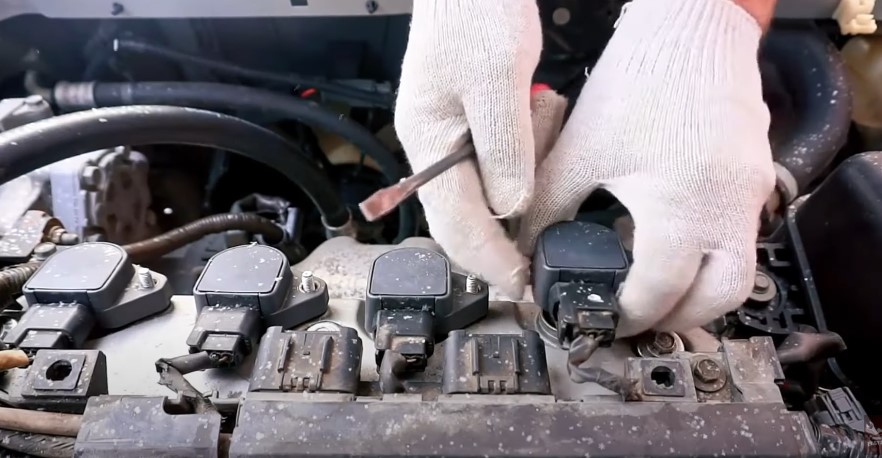
Bad Ignition Coil
The ignition coil, also known as the spark coil, is a part of an automobile’s ignition system. It transforms low current from the car battery to thousands of volts to ignite the fuel and start the engine.
Misfire is the malfunction that comes with a bad ignition coil and ultimately leads to shutdown while driving. It breaks the sync of cylinders in the ignition system.
Signs of the bad ignition coil
The most common early signs of a bad ignition coil can be;
- Blinking engine light with poor fuel economy
- Hard start
- Vibrating
- Poor fuel economy
- Engine misfiring and stalling
- P0362 or P0350
How to fix a bad ignition coil?
If you locate its problem, an insightful decision would be changing it permanently.
The position of the ignition coil varies from to jeep model. So it’s better to consult a mechanic to run the different processes.
Alternator Problems
The alternator is the power source of the Jeep and is responsible for converting mechanical energy to electric energy. After conversion, it sends power to run and charges the battery.
A dead or faulty alternator drains your energy faster and can’t keep your battery fully charged, and ultimately it will cause your engine to stop.
Signs of a bad alternator problem
The most common early signs of inadequate alternator problems can be
- Dim, battery warning lights. You can see them in one of your dashboard lights,
- Flickering headlights, reading lights, or other lights.
- The electrical issue
- Dead battery
- Engine stalling
How to fix a bad alternator?
Repairing an alternator is not a good option, and it is recommended to replace it. The repair and replacement costs are almost identical, but the new one will provide better service with a warranty.
You can repair cracks or broken belts of alternators. The bearing can be easily replaced. If it is costly for you to replace, better use a refurbished one.
Repairing a lousy alternator needs some skills, so it’s better to contact a mechanic for better service.
Malfunctioning Oxygen Sensors
Jeep electrical sensors inform about the operating property of a jeep. The jeep O2 sensor monitors oxygen levels and reports to the control unit.
It lasts around 1,00000 miles but can damage faster due to contamination. Incorrect fuel calculation, misfiring, and rough running result from malfunctioning oxygen sensors.
Sings and symptoms of bad oxygen sensors
The most common early signs of bad oxygen sensors can be
- Power loss
- Increased fuel consumption
- Engine noise & overheating
- Sudden failure of the catalytic converter
- Sulfuric Smell from the exhaust
- Engine stalling
How to fix bad oxygen sensors?
You can go to the workshop to change the oxygen sensor if you can do it yourself; that’s great. It is simple, and you can do it with a wrench if you have one.
Very first, locate it and plug out the connection. Detach the sensor with the wrench and prepare a new one with lubricant. After that, screw it with your hand and groom it with the wrench. Now give an electrical connection to the sensor, and you are done.
Wiring Issues
The wiring harness is a series of wires that passes all over the jeep and conveys information about electrical and other needed places. It can damage or wear out over time and be the culprit for shutting your Jeep.
Open or short circuits in wiring can cause severe risk though it’s not very common. It causes the engine to shut at low speed, damage to the connector, difficulty in starting, and mechanical damage.
Signs and symptoms of bad wiring issues
The most common early signs of poor wearing issues can be
- Dead battery
- Losing charge rapidly
- Sudden start or jerking
- Flickering light
How to fix a wiring issue?
You need to gain in-depth knowledge to fix it, so better to go to a mechanic. The whole wiring replacement costs a lot; luckily, most of the time, you will only need to rewire partially. Time and cost depend on how much wiring you need.
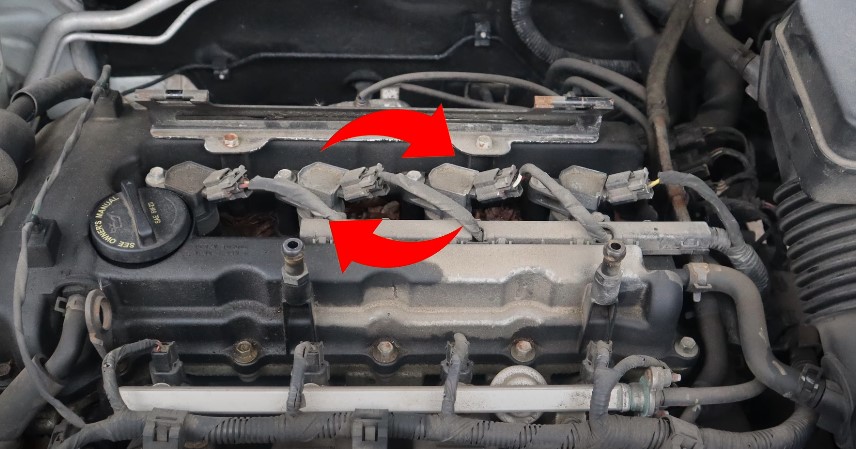
Bad Temperature Sensor
A coolant temperature sensor or temperature switch monitors temperature and adjusts fuel injection timing. It also measures the electrical resistance. The old temperature sensor can damage.
It is necessary as a cold engine requires more fuel than the hotter one. A hot one can be the source of causing permanent heat production, misfiring engine, overheating engine, black smoke, and check engine light on.
Signs of bad temperature sensors
The most common early signs of poor temperature sensors can be
- Abnormal temperature readings
- Poor mileage
- Closed cooling fan
- Poor engine performance
- Black smoke
How to fix bad temperature sensors?
Fixing it is not a big deal, and this is not a repairable item so replace it fast. Detach the old one with the help of a spanner and attach the new one. Use a cloth to plug the whole and perform it in a cold engine.
Issues with the Fuel Pump
Another origin for shutting your car permanently in the middle of driving is the fuel pump problem. It is in charge of moving high-pressure fuel to fuel berate. High pressure is mandatory to run the engine; otherwise, it dies. And check engine lights is not helpful in this case.
Signs of a bad fuel pump
The most common early signs of bad fuel pump can be
- Noise from engine
- Poor engine run
- Not compatible with the speed
- Dead engine
- Decrease in gas mileage
How to fix the fuel pump issue?
A fuel pump is replaceable and serviceable. Don’t replace it until and unless this is old and covers vast mileage. The fuel pump is not costly, but the service charge is high.
By following the manual step-by-step, you can replace it with some handy tool if it’s your first time; still, you can do it. A mechanic will take up to 45 minutes, and you may do it in 6 to 7 hours, so if you are in a hurry better to go to a mechanic.
A bad crankshaft position sensor
A crankshaft position sensor supervises the rotation speed and the position of the crankshaft, and the engine won’t start without it. A cylinder misfire is determined by its position. Fuel injection only works in the presence of its signal.
With a bad crankshaft sensor vehicle, won’t be able to sense the required fuel injection during the speed, and your vehicle might stop while driving.
Signs of the bad crankshaft position sensor
The most common early signs of a bad crankshaft position sensor can be
- Check Engine light on
- Odd acceleration
- Reduced fuel economy
- Random engine cut out
- Hard to start a jeep
How to fix a bad crankshaft position sensor?
The crankshaft position sensor is very polished and tiny. It is better to avoid fixing it by yourself.
Faulty jeep Battery
A faulty jeep battery is a common issue to shut your jeep permanently while driving. Without a good battery, the alternator works hard to run the engine. The old battery and the internally degraded or corrosive battery cause problems.
Signs of faulty jeep battery
The most common early signs of a faulty jeep battery can be
- A slow-cranking engine
- The start won’t be made
- Dim lights
- Dashboard lights flickering
- Noises associated with clicking
How to fix a faulty jeep battery?
Usually, the jeep battery is replaceable, not serviceable. You will need instruments like a wrench, ratchet, and socket to fix it.
First, raise the hood and disconnect all unnecessary wires to fix it. Remove the main terminal and mounting bolt. Replace it with a new one and connects wires and cables to complete the process.
If you need more basic knowledge about parts and instruments, change it better to fo for the mechanic.
Conclusion
Jeep is a smart choice, and you should take care of it to keep it in shape for longer. Check your fuel pump before going out; see if the Check Engine is on to understand problems if it shuts off while driving.
Since there are quite a few components to check when the Jeep shuts off suddenly, the diagnosis process could be tedious. So it’s better you tow the vehicle to a repair shop.




